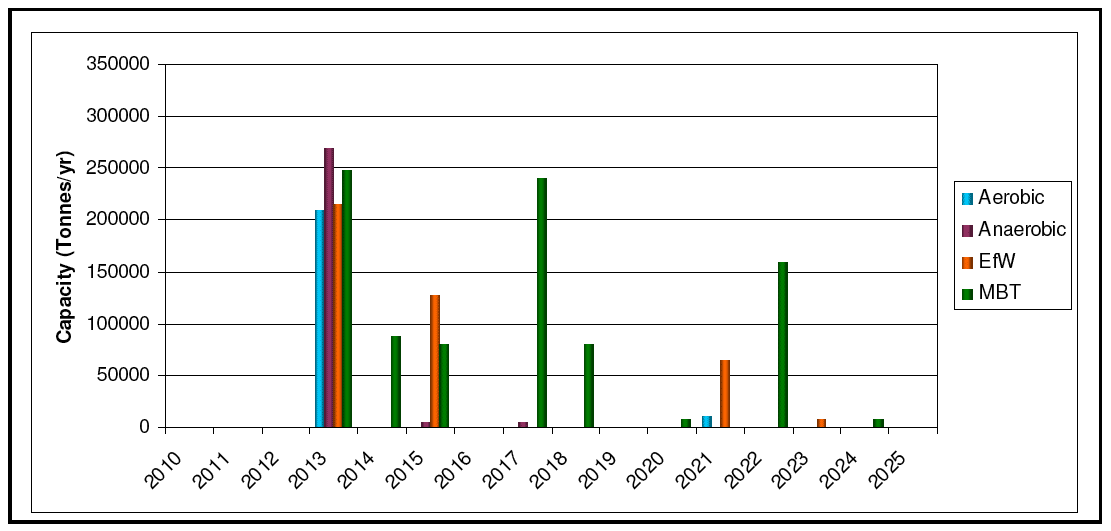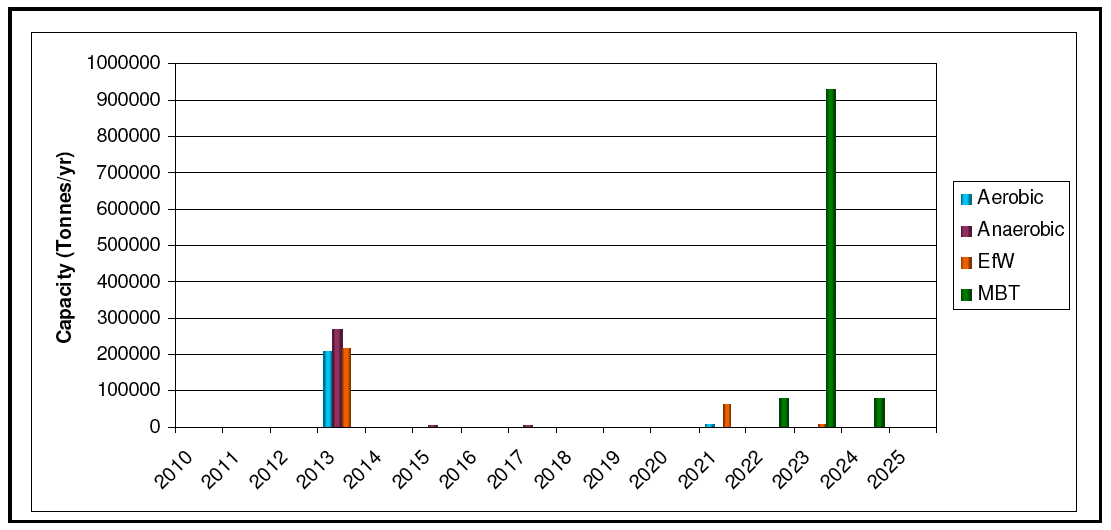Assessing the costs of meeting Scotland's zero waste targets: report
Report examining the costs to local authorities of meeting the European Commission's Landfill Directive and Scottish Government Zero Waste targets.
5: Conclusions
5.1 Although progress to date has been encouraging, the advances made so far in meeting Scotland's waste targets will most likely prove to be the easiest steps on the road to a Zero Waste society as the more straightforward gains are achieved first. Consequently, future municipal waste management will prove more challenging and require further changes in our approach to waste management. It will be important to maintain a strategic overview of the long term requirements so that infrastructure is developed in time to meet EU targets. Existing infrastructure capacity will be insufficient to meet the targets through to 2025.
47. Table 4-7 shows the Cost Benefit Analysis figures for all the scenarios. The Net Present Cost figure represents the amount over and above the current level of spending that would be required through to 2025 to implement each of the scenarios. To meet all EU and Scottish Government waste management targets, Scenario 5 (with 65% source segregation) gave the most cost effective solution and required the following from 2010 to 2025:
- NPV Infrastructure Investment = £303 million
- Net Present Cost funding over and above present levels = £1,046 million
5.2 Regardless of what future waste scenario is considered, the cost of managing Scotland's waste will increase.
5.3 The option of 'doing nothing' is by far the most costly due to landfill penalties. Without landfill penalties, 'do nothing' costs significantly less, but is still more expensive than Scenario 5 with high levels of source segregation.
5.4 By bringing EfW capacity online sooner in Scenario 6, the Net Present Costs and costs of infrastructure are increased significantly. Additionally, bringing EfW online sooner may jeopardise recycling/composting targets through competition by diverting waste to EfW.
5.5 It can be seen that although infrastructure investment is significant, by far the most significant factors are collection and processing costs.
5.6 Figure 5-1 illustrates the capacity of additional infrastructure required and the year by which it must be operational to meet all EU and Scottish Government waste management targets with source segregation levels of 50% (Scenario 3).
Figure 5-1 Infrastructure Capacity Requirement to meet EU & Scottish Government Targets (Scenario 3)

Source: SQW Energy
5.7 It can be seen that there is a significant requirement for additional infrastructure to be operational by the year 2013. Assuming a minimum two to three year lead time for most infrastructure projects, steps must be taken now if the 'waste infrastructure hurdle' of 2013 is to be cleared.
5.8 If it is too late to develop the necessary infrastructure in time, then the only other way to meet the 2013 targets is by simultaneously increasing source segregation.
5.9 In terms of infrastructure, smaller units may be more affordable for smaller local authorities, but there are significant economies of scale to be attained by choosing larger plants. There are significant potential savings to be made by having co-operation and combined infrastructure solutions between local authorities.
5.10 Collection and processing drive the overall cost of waste management. To meet all targets in Scenario 3, the infrastructure costs are approximately £449 million NPV. However, this is dwarfed by the operational costs - collection (£3.8 billion NPV) and processing (£3.0 billion NPV). Therefore the largest savings are to be gained in reducing collection and processing costs through reducing waste arisings and more efficient infrastructure use (e.g. higher participation, capture and lower contamination) and further work is recommended in these areas.
5.11 Scenario 5 has source segregation levels of 65%. Figure 5-2 shows the capacity of additional infrastructure required and the year by which it must be operational to meet all EU and Scottish Government waste management targets set out in Scenario 5.
Figure 5-2 Infrastructure Capacity Requirement to meet EU & Scottish Government Targets (Scenario 5) with 65% source segregation.

Source: SQW Energy
5.12 Scenario 5 is the most cost efficient scenario, primarily due to the increased levels of source segregation. Increased levels of source segregation significantly reduce the amount of new infrastructure required and the processing costs. Of the three 'meet all targets' scenarios (scenario 3 to 5), the Net Present Cost reduces as more source segregation is done. This is due to a combination of reduced infrastructure required to process residual waste and less processing costs as sorting and processing costs are shifted towards the point of waste collection.
5.13 If the EU and Scottish Government targets can be met with more source segregation and less residual processing, investment costs can be reduced through less need for MBTs as illustrated in Scenarios 4 and 5. The 60% and 65% source segregation of Scenario 4 and 5 both delay the need for infrastructure, particularly MBT, and allow more time to plan for and establish infrastructure. However, it may have to be considered whether these levels of source segregation are achievable and if so, whether any additional cost would be necessary, e.g. education and public awareness campaigns.
5.14 It is therefore recommended that further work is required to:
- Invest in effective communication and education including on the non-market benefits of investing in prevention, reuse and recycling;
- Better understand the efficiencies in collection infrastructure;
- Improve data collection on costs for collection, processing and infrastructure; and
- Better understand the synergies between MSW and other waste streams in terms of shared infrastructure.
Contact
Email: Central Enquiries Unit ceu@gov.scotEmail: Central Enquiries Unit ceu@gov.scot
There is a problem
Thanks for your feedback